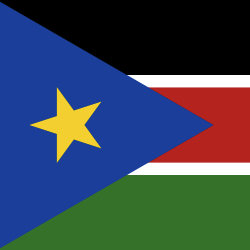A Russian-dominated breakaway region of another former Soviet Republic, just up the river from the Black Sea and a short hop from Crimea, has formally requested the Russian Federation follow up on its Crimea annexation by doing the same there.
Although many Western observers initially thought the continuing buildup of Russian troops near Eastern Ukraine was intended for a possible invasion of Eastern Ukraine, NATO’s Supreme Allied Commander in Europe, U.S. Air Force General Philip Breedlove, said today that he is worried it may in fact be the Russian Army positioning itself for another intervention on the other side of Ukraine and Crimea, in the Transdniestria region of Moldova.
A month ago I would have said that was nonsense — and it still feels strategically and logistically less likely than the Crimea takeover — but a month ago, few were expecting such a brazen seizure of Crimea by the Russian Federation. So with that in mind, I thought it would be a good time to expand upon my “Beginner’s Guide to the Post-Soviet ‘Near Abroad'” prepare some research on Transdniestria and Moldova.

The landlocked Eastern European country of Moldova is wedged between southwestern Ukraine and northeastern Romania. The predominant language is Moldovan, which is effectively the same language as Romanian and since 1989 has used the Roman alphabet instead of the Cyrillic alphabet (previously enforced by Moscow). The country has been independent since 1991 when the Soviet Union ended, but it changed hands and was carved up many times in the past 500 years. At various points, parts of the country were ruled by the Ottomans, the Romanians, the Lithuanians, the Polish, the Ukrainians, the Russian Empire, and the Soviet Union.
The borders have also changed quite a few times in that time and Moldova has struggled to find its geographical place in the region. Part of the country had long been a Russian Empire border zone (on the edge of Ukraine) and was absorbed into Soviet Ukraine and the Soviet Union right after World War I, when the Russian Empire collapsed and was replaced by the communist government. The rest of the country was part of Romania during the interwar years. After World War II, the parts of what are now Moldova today were fused together into a Moldovan Soviet Socialist Republic, one of the smaller of the USSR’s member republics.
So, as you can imagine, by the end of the 1980s and start of the 1990s, things were pretty confusing and jumbled. There wasn’t a clearly defined national identity because there wasn’t even a clearly defined historical area or legacy of self-rule. It was possible that Moldova might even try to rejoin Romania, which has the most in common with the bulk of the country and had previously controlled it several times. After late 1989, when Romania’s totalitarian dictator Nicolae Ceaușescu had been executed, it seemed to Moldovan nationalists like a good escape route from Soviet/Russian domination, which had not yet ended.
This plan, unfortunately, didn’t sit well with the longstanding Russian population from the other side of the Dniester River, the zone that had not been part of Romania during the interwar years (having been almost immediately brought into the Soviet Union by 1924). This was a place that had been a militarized frontier of the Russian Empire since 1793 and had suffered greatly under Axis-Romanian occupation during World War II — experiencing forced Romanianization and the murders of over 100,000 Romanian and Ukrainian Jews in Axis concentration camps built in the region.
This geographical area, the narrow strip of land between the Dniester River and the Ukrainian border, effectively Moldova’s Russianized East Bank (and a few communities on the Moldovan side of the river), is known in English as the Trans-Dniester region or Transdniestria/Transnistria and other variants adapted from the Romanian point-of-reference to “the area across the Dniester.”
The bulk of the rest of Moldova, the Dniester’s West Bank, is the non-Russian-speaking area referred to as “Bessarabia” — which has changed hands far more often than Transdniestria. By the early 1990s, Transdniestria’s Russian population, despite now being separated from the Russian Soviet Federal Republic by the entirety of a newly independent Ukraine, still saw itself as the Western-most outpost of historical Russia, and felt very threatened by the pro-Romanian nationalism of the Moldovan independence movement that had broken the country away from the Soviet Union.
They promptly declared independence from Moldova as the USSR was breaking up and — after some initial skirmishes in the first politically chaotic months — the new Moldovan military tried to invade the Transdniestria region.
Below: The current flag of the breakaway region.

Complicating matters was the giant, heavily armed elephant in the room: The fact that the Soviet Union’s 14th Army had been stationed in eastern Moldova (Transdniestria) at the time of independence and was assigned to Russia, rather than Moldova, when the former Soviet states were divvying up the old USSR’s Army and Navy.
Read more



 South Sudan is Africa’s newest country and is a significant oil-producer (
South Sudan is Africa’s newest country and is a significant oil-producer (